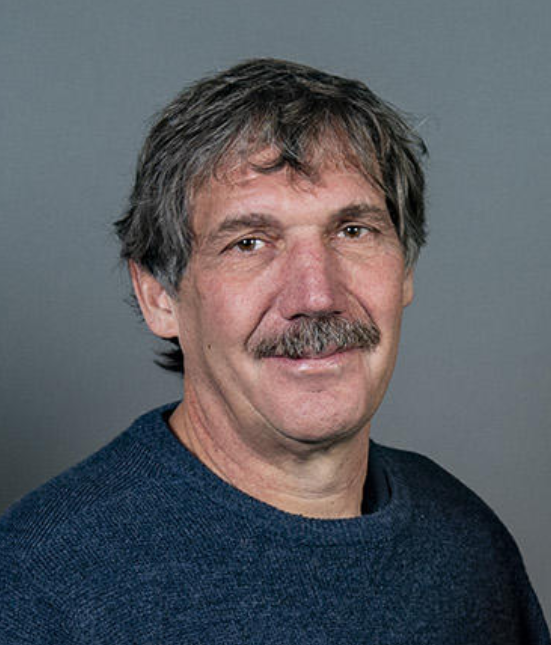Table Top microMRI for Cell Imaging
Current microMRI uses large superconducting magnets (> 7T) and can obtain a resolution of approximately 2 to 20 micrometers. However, microMRI systems cannot resolve cells or compete with optical techniques required for pathology and personalized medicine applications. Point-of-use hyperpolarization systems can provide both enhanced signal and contrast enabling microMRI of small samples such as tumor biopsies and patient derived organoids used for
therapeutic evaluation.
Here, I present the development of a novel table-top microMRI system that uses integrated point-of-use solid-state water-proton hyperpolarization systems that rely on spintronic concepts. The system operates at 135 mT with the nuclear magnetic resonance (NMR) and ferromagnetic resonance (FMR)-based hyperpolarization systems running at ~6 MHz and ~10 GHz, respectively. The hyperpolarizer operates at room temperature and low field and is much smaller and simpler than other existing hyperpolarization systems. The mode structure of the FMR film can be complex and needs to be understood to optimize spin transfer. I will discuss spin transport and spin-electrochemistry of ferromagnetic films interacting with proton spins in biologic solutions. The surface spin chemistry and transport is complex and the essential component of this technology. I will also discuss the design of micromagnets, compact gradients, FPGA based console, and compact microwave systems which are required to enable the fabrication of a low-cost small footprint table-top MRI.
Date and Time
Location
Hosts
Registration
-
 Add Event to Calendar
Add Event to Calendar
Loading virtual attendance info...
- 1420 Austin Bluffs Pkwy
- Colorado Springs, Colorado
- United States 80918
- Building: Osborne Center for Science and Engineering
- Room Number: A204
- Contact Event Host
- Co-sponsored by UCCS
Speakers
 Stephen Russek of NIST Boulder
Stephen Russek of NIST Boulder
Table Top microMRI for Cell Imaging
Current microMRI uses large superconducting magnets (> 7T) and can obtain a resolution of approximately 2 to 20 micrometers. However, microMRI systems cannot resolve cells or compete with optical techniques required for pathology and personalized medicine applications. Point-of-use hyperpolarization systems can provide both enhanced signal and contrast enabling microMRI of small samples such as tumor biopsies and patient derived organoids used for
therapeutic evaluation.
Here, I present the development of a novel table-top microMRI system that uses integrated point-of-use solid-state water-proton hyperpolarization systems that rely on spintronic concepts. The system operates at 135 mT with the nuclear magnetic resonance (NMR) and ferromagnetic resonance (FMR)-based hyperpolarization systems running at ~6 MHz and ~10 GHz, respectively. The hyperpolarizer operates at room temperature and low field and is much smaller and simpler than other existing hyperpolarization systems. The mode structure of the FMR film can be complex and needs to be understood to optimize spin transfer. I will discuss spin transport and spin-electrochemistry of ferromagnetic films interacting with proton spins in biologic solutions. The surface spin chemistry and transport is complex and the essential component of this technology. I will also discuss the design of micromagnets, compact gradients, FPGA based console, and compact microwave systems which are required to enable the fabrication of a low-cost small footprint table-top MRI.
Biography:
Stephen E. Russek obtained an A.B. in physics from Harvard University in 1980, spent two years working at AT&T Bell Laboratories researching advanced silicon devices, and then obtained a Ph.D. in physics from Cornell University in 1990 in superconducting devices. He currently leads the Imaging Physics Project in the Magnetic Imaging Group at NIST and codirects the MRI Biomarker Measurement Service. He is author/coauthor of over 250 peer-reviewed publications with over 10000 citations, has written several book chapters, has three patents, and is a fellow of the American Physical Society. He is a recipient of the Department of Commerce bronze, silver, and gold medals, and Ron Brown award for his work on neuromorphic technology, spintronics and spin oscillators, MRI phantoms, and quantitative medical imaging. He is the recipient of the Colorado CO-Labs award for high impact research. He has been the supervisor for over 25 undergraduate/graduate students and postdoctoral fellows. He is a senior member of IEEE, and
an active member of the medical physics group in American Physical Society, the International Society of Magnetic Resonance in Medicine, and the Radiological Society of North America.
Email:
Address:NIST Boulder, 325 Broadway, Boulder, Colorado, United States, 80305

